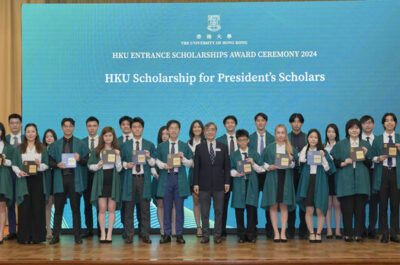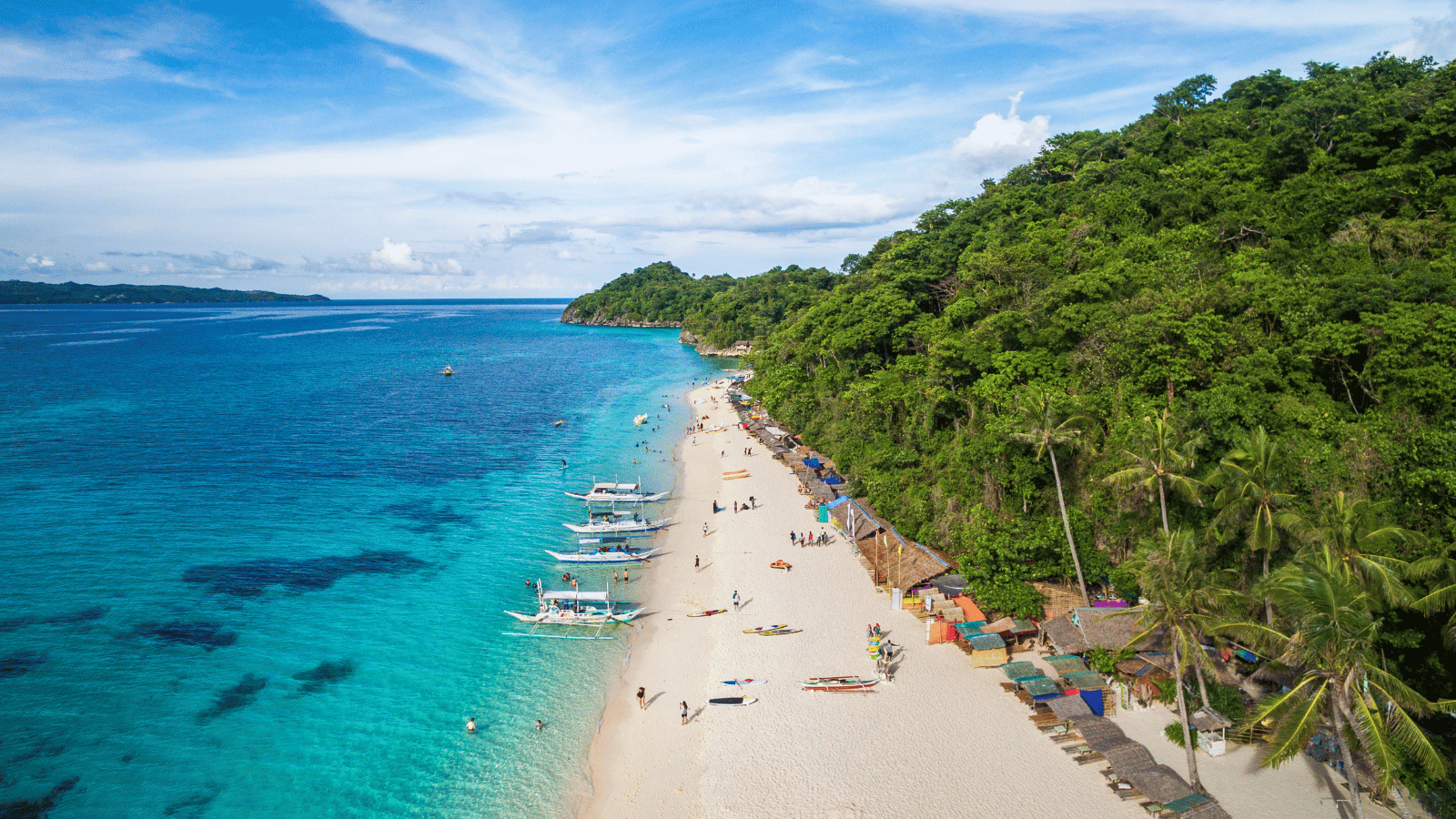This comprehensive article delves into the significance of purposeful leadership in achieving a harmonious balance between tourism growth and sustainability. It underscores the importance of aligning stakeholders’ visions towards preserving the local culture, environment, and community, ensuring the tourism sector’s success in the long term.
This article is part of the Balanced Tourism column.
In a world of accelerating change and mounting environmental concerns, the tourism industry stands at a crucial crossroads. The traditional pursuit of relentless growth threatens to undermine the very essence of what makes destinations attractive. At the same time, an overemphasis on sustainability without fostering the industry’s economic health leads to stagnation. Achieving a balance – sustainable tourism that propels the industry forward without environmental damage – demands a new paradigm of leadership.
As a former CEO of national tourism boards and a fervent advocate for responsible travel, I’ve witnessed the seismic shifts in the landscape of tourism. Today, travelers seek more than just sightseeing; they yearn for meaningful experiences. This evolution is largely driven by purposeful leadership in striking a harmonious balance between growth and sustainability, sculpting tourism destinations that not only prosper but also preserve. This article explores how such leadership can masterfully balance growth with sustainability, and the consequences when short-term gains overshadow sustainable practices.
The Crossroads of Growth and Sustainability
Tourism is inherently paradoxical. It brings promises of economic boon and cultural enrichment but also harbors potential threats to environmental sanctity, cultural authenticity, and local tranquility. The convergence of growth and sustainability is a complex junction where the essence of purposeful leadership is most pronounced. Leaders who can envision a future where tourism flourishes without depleting the heritage of tomorrow are the true stewards of sustainable tourism.
Why Purpose Matters
Purposeful leadership goes beyond simple profit-seeking. It involves a deep commitment to creating long-term positive impact and finding meaning in what we do. In the context of tourism, this means recognizing that destinations are not merely economic assets, but intricate ecosystems comprising natural resources, local communities, cultural heritage, and the visitor experience. Purposeful leaders embrace their role as stewards, recognizing the profound responsibility they hold in making decisions that will shape the future of a destination.
Defining Purposeful Leadership in Tourism
Purposeful leadership in tourism transcends traditional metrics of success. It’s about harmonizing the visitor’s experience with the destination’s legacy. Key traits of purposeful leaders include:
- Long-term Vision: They prioritize enduring prosperity over transient benefits, recognizing the profound impact of their stewardship on future generations.
- Inclusivity: They ensure tourism’s dividends are shared, empowering communities and safeguarding cultural legacies.
- Innovation: They leverage sustainable practices and technology to minimize tourism’s ecological footprint.
- Resilience: They adeptly navigate global tourism’s intricacies, pivoting amidst challenges and capitalizing on sustainable growth avenues.
Balancing Act: Growth and Sustainability
The balance between growth and sustainability is delicate and demands a strategic approach. Purposeful leaders employ a multi-faceted strategy to maintain this equilibrium:
Sustainable Infrastructure Development: They invest in infrastructure that not only supports the growth of tourism but also conserves the environment. Examples include eco-friendly accommodations, renewable energy sources, and waste management systems.
Community Engagement and Empowerment: They involve local communities in tourism planning and development, ensuring that tourism growth contributes to social and economic upliftment.
Preservation of Cultural and Natural Heritage: They implement policies and practices that protect and celebrate cultural identities and natural landscapes, turning them into unique selling propositions rather than commodities.
Education and Awareness: They foster a culture of responsible tourism, educating visitors on the importance of preserving the destination’s essence for posterity.
Balance as the Goal, Not the Compromise
Unfortunately, conversations about tourism often become polarized – prioritizing economic growth or environmental preservation. A key strength of purposeful leadership is the ability to recognize how growth and sustainability can reinforce each other. Here’s how:
Sustainable Innovation: Promoting innovation that reduces waste, utilizes renewable energy sources, and supports the circular economy can significantly diminish tourism’s footprint while increasing efficiency and cost-effectiveness.
Economic Diversification: Destinations relying solely on mass tourism are more vulnerable to external shocks. Fostering diverse visitor experiences, encouraging niche tourism, and developing strong ties with local businesses helps distribute profits and creates resiliency.
Community-Driven Development: Engaging local communities in tourism development planning gives them a voice in decision-making processes and contributes to feelings of ownership. Successful tourism must prioritize the needs and interests of the residents whose homes are also the attractions visitors seek out.
Leading with Purpose: A Practical Pathway
Purposeful leadership in tourism is a necessity and a responsibility. It’s the compass that will guide the industry towards a future where environmental stewardship, economic vitality, and social progress walk hand-in-hand. By embracing the challenges, acting today, and leading with intention, the tourism industry can not only sustain itself but foster truly thriving, resilient destinations for generations to come.
Adopting a purposeful leadership approach in tourism necessitates a shift in mindset as well as action.
Articulate Your ‘Why’: Start with a clear and compelling articulation of your purpose as a leader in tourism. What are the long-term aspirations for your destination, and what is your vision for its positive impact?
Strategic Foresight: Sustainability shouldn’t be an afterthought, but a fundamental lens shaping your choices. Regularly assess and anticipate long-term environmental, social, and economic trends – they will determine what a “successful” destination looks like in the decades to come.
Data-Driven Decision Making: Employ relevant data such as visitor trends, sentiment analysis, resource consumption, and community sentiment to make informed decisions. This will prevent well-intentioned but potentially misguided actions.
Partnership and Collaboration: No single entity can create a truly sustainable destination. Actively forge alliances with local communities, businesses, government agencies, and environmental organizations. Success depends on working in concert.
Common Success Factors
Common Success Factors of Purposeful Leaders displaying some shared tendencies that make them effective advocates for balanced growth and sustainability:
Visionary Planning: Leaders, whether CEOs or ministers, who are able to articulate a long-term vision that prioritizes sustainability while ensuring tourism’s economic development are often pivotal figures in setting a clear direction and gaining buy-in for their strategies.
Championing Innovation: By actively supporting initiatives like green certifications for businesses, renewable energy solutions within the tourism sector, or waste reduction technology, forward-thinking leaders create incentives that can push the entire industry towards sustainable practices.
Community Engagement: Tourism leaders who build strong relationships with local communities, including underrepresented groups, and incorporate them into planning and decision-making processes tend to garner more support for initiatives while simultaneously enhancing resident quality of life.
Data-Informed Strategies: Leveraging data on visitor behavior, resource capacity, and community sentiment allows CEOs and ministers to implement proactive approaches to prevent overcrowding and manage negative impacts.
Collaboration and Partnerships: Recognizing that a single institution can’t resolve complex issues, they’ve forged strong partnerships with NGOs, environmental organizations, other government agencies, and the private sector, creating a united front for progress.
Communication and Storytelling: Successful leaders in this arena are compelling communicators. They skillfully convey the long-term benefits of sustainability, translating often complex information in terms that resonate with diverse audiences. This ability to build shared understanding is crucial for garnering support.
Persistence Amidst Challenges: These leaders often navigate bureaucratic hurdles, conflicting interests, and competing priorities. Their persistence, flexibility, and dedication to the long-term goal of sustainable tourism allow them to navigate obstacles and keep the agenda moving forward.
Leadership Challenges
However, the reality is that Tourism leaders face various challenges that may compromise their best intentions, including:
Conflicting Interests: Often, tourism leaders navigate various political pressures, local needs, and business interests. It can be difficult to ensure all stakeholders are satisfied, while staying true to a guiding vision of sustainability.
Limited Resources: Funding, staffing, and technological limitations can restrict what innovative programs or initiatives tourism boards can enact. Tourism ministers and DMO CEOs are typically dependent on budgets allocated by the government, making it complex to secure the means for ambitious projects.
Short-Term vs. Long-Term Balance: The tourism industry and political spheres often operate with a focus on immediate outcomes or quick wins. Sustainable development, however, demands a long-term perspective, and leaders need to balance immediate goals with future planning.
Managing Visitor Expectations: Some visitors still view vacations as times to be ‘excused’ from sustainable behavior. Balancing these expectations with a drive towards visitor education and incentivizing responsible choices is a delicate task.
Executive Briefing on DMO Leadership
Sustainability Leaders United, in collaboration with Chameleon Strategies, has published an Executive Briefing, to provide insights for DMO leaders on how to skillfully navigate the challenges in balancing smart destination marketing with sustainable development, especially in an ever-changing landscape with evolving stakeholder expectations. Claim your free copy of the Executive Briefing at Sustainable Leaders United.
Destination Leadership: Executive BriefingRisks when ignoring Purposeful Leadership
Destinations that ignore purposeful leadership risk various long-term issues that can be very hard to fix, and may cause the decline of a destination’s attractiveness, risking the livelihood of its residents and the conservation of its biodiversity and its tangible and intangible cultural heritage. Some of these risks include:
Environmental Degradation: Pollution, overuse of resources, habitat loss, and increased carbon emissions threaten the destination’s natural assets—the very thing that attracts visitors.
Social and Cultural Erosion: Over-crowding strains local infrastructure and can exacerbate inequalities, erode authentic cultural experiences, and create tension between residents and visitors.
Brand Damage: Eventually, unchecked negative impacts harm the destination’s reputation. Overcrowding, noise, and a degraded environment create negative perceptions, turning off the conscious travelers pivotal for sustained success.
The Ripple Effect of Purposeful Leadership
The influence of purposeful leadership in tourism extends far beyond the borders of the destinations. It sets a global precedent, encouraging other destinations to follow suit. The ripple effect of such leadership fosters a global tourism ethos characterized by respect, responsibility, and reciprocity.
Boracay: A Lesson in Reclaiming Paradise
Background
Boracay, a small island in the central Philippines, known as a picture of tropical paradise, loved for its white, powdery beaches and crystal-clear waters. However, the allure of its beauty became its bane. The island experienced an overwhelming surge in tourism, leading to environmental degradation, infrastructure strain, and social issues. At its peak, Boracay was receiving over 2 million visitors annually, far exceeding its sustainable capacity.
The Closure
In 2018, the Philippine government made a bold and unprecedented decision: Boracay would be closed to tourists for six months. This drastic measure was in response to environmental concerns, including sewage being directly dumped into the sea, illegal structures encroaching on wetlands, and the general strain on the island’s ecosystem.
Actions Taken During the Closure
The closure period was utilized to undertake a series of rehabilitation efforts:
Environmental Cleanup: The government enforced strict regulations to address the island’s sewage and waste management problems. Businesses, even major hotel chains, were inspected for environmental compliance, leading to the closure and demolition of establishments violating laws.
Infrastructure Overhaul: Roads were widened, and drainage systems were improved to handle flooding, a common problem during the rainy season. The government also enforced a 30-meter easement from the shoreline, clearing the beachfront of any commercial establishments that had encroached upon it.
Regulating Visitor Numbers and Activities: New rules were implemented to control the number of visitors and regulate tourist activities. This included an island carrying capacity study, which recommended limiting tourist numbers to a sustainable level.
Concerns and Impact on Local Businesses:
The closure of Boracay raised concerns among local businesses regarding the impact on the island and its residents. As a popular tourist destination, Boracay heavily relied on tourism for economic growth. The closure meant that businesses had to halt operations and navigate a period of uncertainty.
Rehabilitation Success and Sustainable Tourism:
The rehabilitation efforts in Boracay have been regarded as successful in terms of restoring the island’s natural features and implementing sustainable tourism practices. The closure allowed for critical infrastructural improvements, such as sewage treatment facilities and stricter regulations for resorts and establishments. The redevelopment aimed to promote environmental conservation, community involvement, and responsible tourism.
Lessons Learned:
The closure and subsequent redevelopment of Boracay Island provide important lessons for destination management. This case study highlights the need for purposeful leadership and proactive measures in handling over-crowding, environmental degradation, and the sustainable management of tourism destinations. It emphasizes the importance of prioritizing long-term sustainability over short-term economic gains.
Overall, the closure of Boracay Island in the Philippines serves as a notable case study of purposeful leadership in addressing the challenges of tourism growth and sustainability.
Recommendations:
Stakeholder Collaboration: Purposeful leadership requires collaboration among tourism stakeholders, including government, businesses, local communities, and residents. Engaging all parties fosters a sense of ownership and accountability for sustainable tourism development.
Responsible Tourism Education: Purposeful leaders prioritize educating tourists on responsible tourism practices to minimize negative impacts. This can be done through visitor codes of conduct and immersive cultural experiences.
Regulating Tourism: Purposeful leaders establish and reinforce regulations that manage visitor numbers, protect natural and cultural assets, and ensure equitable benefits for local communities. This may include implementing carrying capacity limits, promoting off-peak seasons, and regulating accommodation platforms.
The Reopening and Its Aftermath
Boracay reopened in October 2018 with a set of stringent new rules to prevent a repeat of the past. The government implemented a no-party policy on the beachfront, smoking and alcohol bans in public areas, and restrictions on water sports activities. An online booking system for accredited hotels was established to control the influx of tourists and ensure compliance with environmental standards.
The Impact
The rehabilitation of Boracay stands as a poignant example of the complexities and challenges of managing a popular tourist destination. Post-reopening, the island has seen improvements in water quality, a reduction in pollution, and a more controlled and managed tourism environment. However, the closure and rehabilitation also had significant economic implications, affecting livelihoods dependent on tourism. The initiative sparked debates on finding a balance between environmental preservation and economic needs, highlighting the importance of sustainable tourism practices.
Balancing Act: Lessons Learned
The contrast between destinations that have embraced purposeful leadership and those that have succumbed to the pressures of unchecked growth is stark. Successful destinations demonstrate that with a long-term vision, inclusive planning, and innovative practices, it’s possible to harness the benefits of tourism without sacrificing environmental integrity or cultural authenticity. On the other hand, destinations that prioritized immediate growth provide cautionary tales of the potential repercussions, emphasizing the need for a proactive and balanced approach to tourism management.
Tourism Leadership Strategic Advisory & Executive Coaching Service
Chameleon Strategies has launched its new Strategic Sparring Service to provide DMO CEOs and Tourism Ministers with trusted advice and guidance when navigating a challenging landscape of running a Destination Marketing Organization or Tourism Board. Contact us and feel free to download the brochure below for more information.
cs_strategic-sparring_short_04Conclusion
Purposeful leadership involves aligning the vision, goals, and actions of tourism stakeholders towards sustainable development. Such leaders understand that long-term success is dependent on managing growth in a way that respects and enhances the local environment, culture, and community.
Being a purposeful leader in tourism is crucial for achieving sustainable and balanced destinations, that are healthy and inclusive. Purposeful leadership is the catalyst transforming the tourism narrative from mere growth to sustainable prosperity. It’s not solely about creating profitable destinations, but about nurturing environments where culture, community, and conservation flourish in unity. As we navigate the juncture of prosperity and preservation, the role of purposeful leaders becomes not just crucial, but indispensable, and the message is clear: the path to sustainable tourism requires a thoughtful balance, where growth is harmonized with the enduring principles of conservation and community wellbeing. The leaders who embrace this path are not just managing destinations; they are shaping a legacy. They are the guardians of our planet’s marvels and the pioneers of a resilient tourism legacy for generations to cherish.
With over 30 years of global travel and tourism expertise, Dr. Jens Thraenhart is the Founding Partner of 25-year-old bespoke strategy consulting firm Chameleon Strategies, the 2nd Vice Chair of the World Tourism Organization’s UNWTO Affiliate Members, the former Chief Executive Officer of the Barbados Tourism Marketing, Inc. (Visit Barbados), the former Executive Director of the Mekong Tourism Coordinating Office, the founder of private-sector-led tourism marketing organization Destination Mekong, and former Board Member of the Caribbean Tourism Organization (CTO).
Previously active in China, in 2009, he co-founded acclaimed marketing agency Dragon Trail and published the China Travel Trends books and website. Jens has also held leadership positions with Destination Canada and Fairmont Hotels & Resorts (now Accor).
As founder of the Destination Film Forum, he is also a big proponent of the power of storytelling, having been recognized as one of the top 10 Most Influential Leaders in Travel in 2022 by Travel Vertical, ranking first in the category of Creativity and Brand Storytelling, and served on the Jury of the Cannes Lion International Film Awards.
Other recognitions for his work include being one of the travel industry’s top 100 rising stars by Travel Agent Magazine in 2003, one of HSMAI’s 25 Most Extraordinary Sales and Marketing Minds in Hospitality and Travel in 2004 and 2005, one of the Top 20 Extraordinary Minds in European Travel and Hospitality in 2014, and honored as one of the Global Travel Heroes in 2021.
He completed his Doctor in Tourism Management at The Hong Kong Polytechnic University and graduated from Cornell University with a Masters in Hospitality Management.
He publishes his three tourism industry blogs: (1) Tourism-Campaigns.com; (2) BalancedTourism.com; (3) PurposePicks.com.




![[PR] PR_Ascott and Vimut Hospital_2024](https://www.traveldailynews.asia/wp-content/uploads/2024/04/PR-PR_Ascott-and-Vimut-Hospital_2024-400x265.jpg)
































































